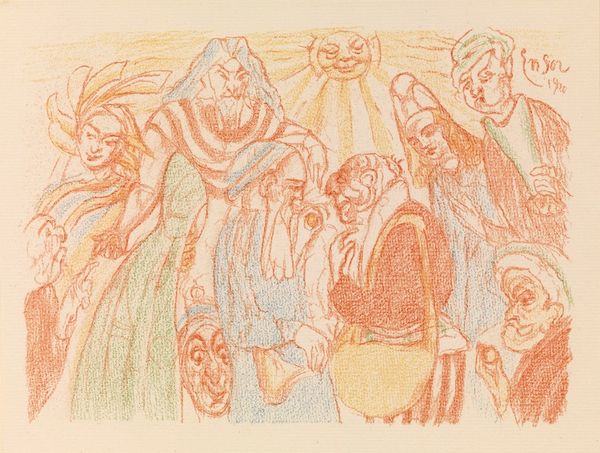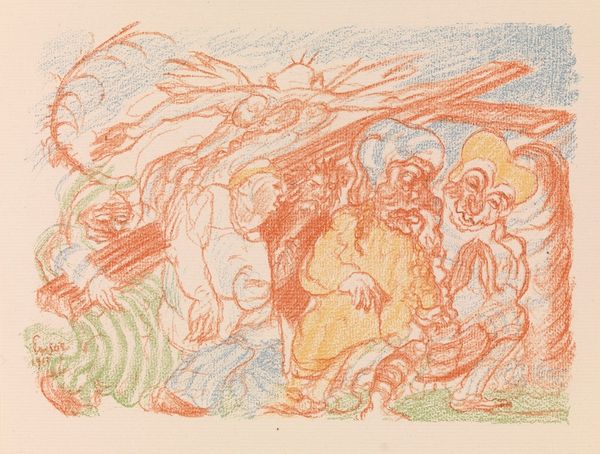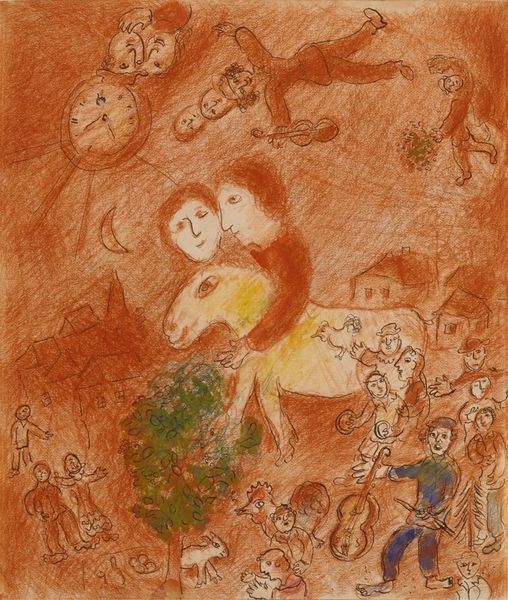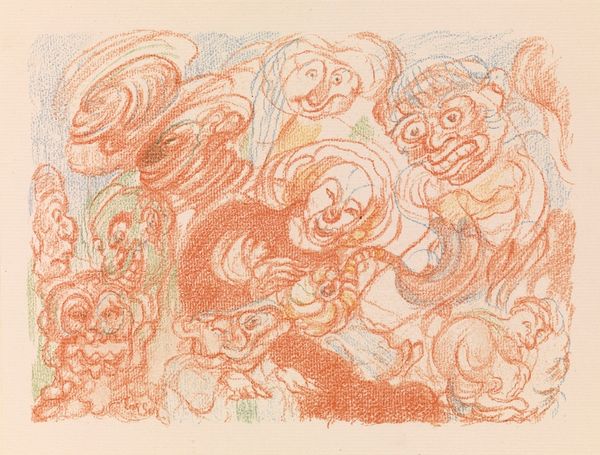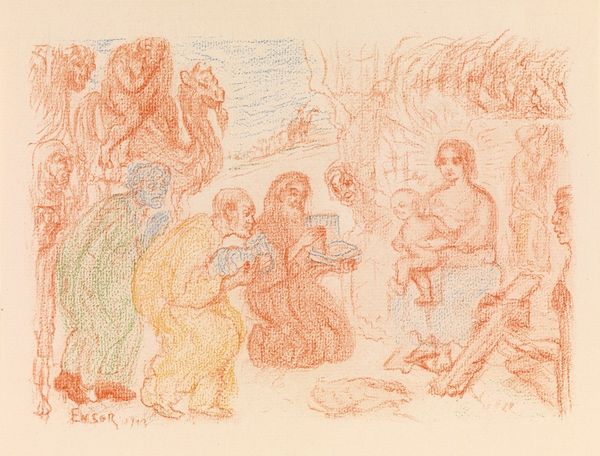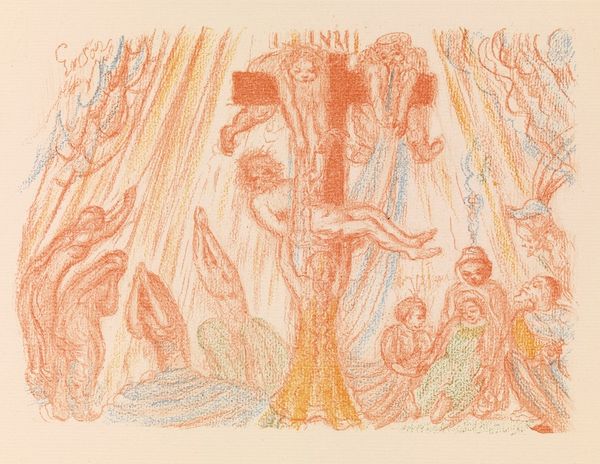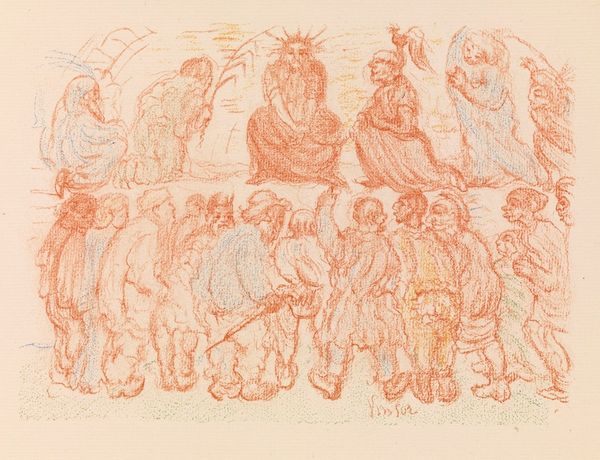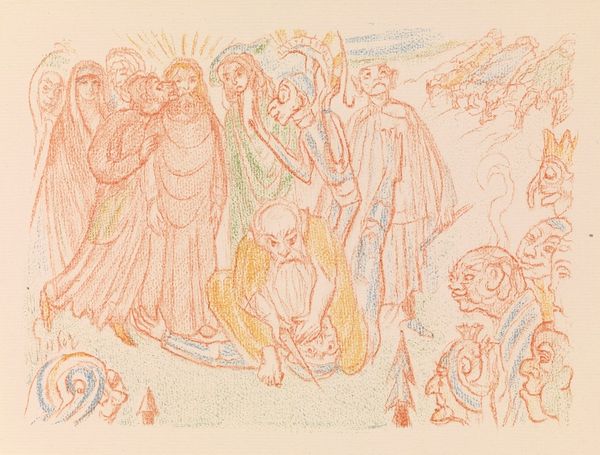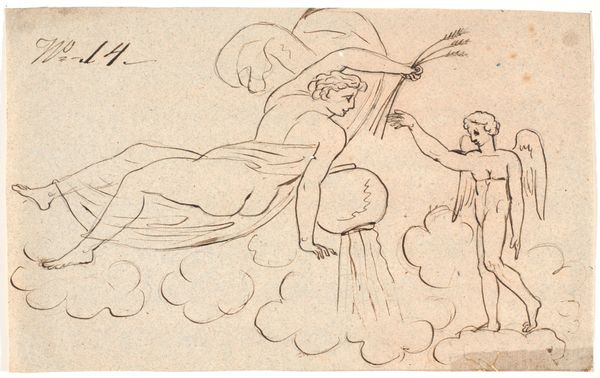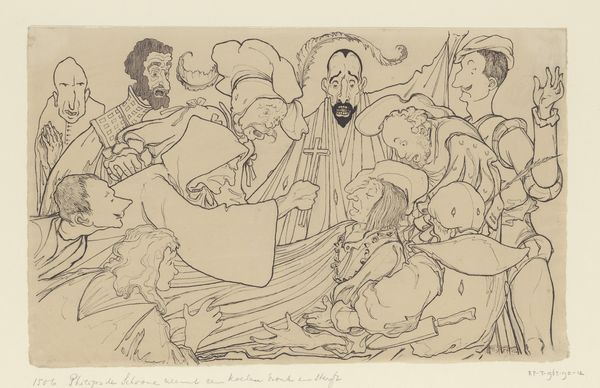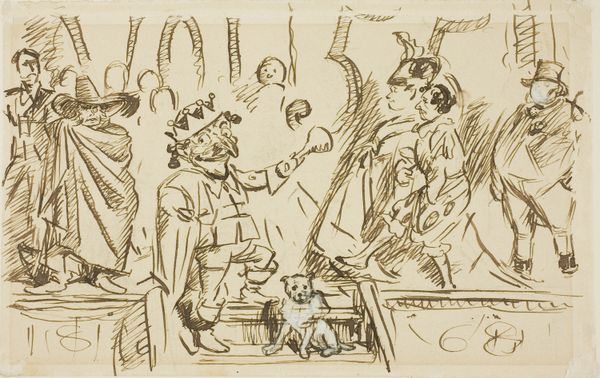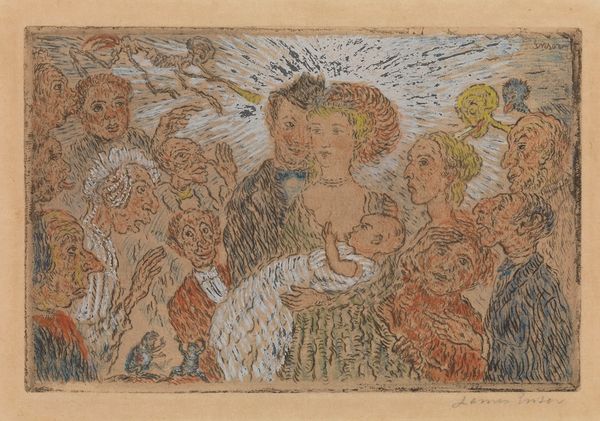
#
landscape illustration sketch
#
ink drawing
#
pen sketch
#
personal sketchbook
#
ink drawing experimentation
#
pen-ink sketch
#
sketchbook drawing
#
watercolour illustration
#
sketchbook art
#
doodle art
Copyright: Public Domain: Artvee
Curator: Welcome. Here we have James Ensor’s 1921 work, "Christ’s Dispute with the Doctors," a vibrant and rather peculiar drawing. Editor: It strikes me as quite unsettling. The figures seem grotesque, trapped between caricature and something deeply sinister. What am I to make of it? Curator: Let's consider its formal qualities. The color palette is intentionally limited. Notice how the reds, greens, and blues are applied in short, energetic strokes, building a complex, albeit dissonant, harmony. Look closely; observe how this impacts your experience. Editor: The dissonance definitely contributes to the unease. Ensor places a central Christ-like figure within an agitated crowd, but it feels more like a condemnation of established power structures, a societal critique against institutions masking sinister agendas. Curator: The semiotic value is compelling. Many have posited on Ensor's tendency toward chaotic composition, a deliberate subversion of academic artistic values. Think about his place as an avant-garde painter within his historical and artistic contexts. Editor: It resonates deeply within the cultural discourse on power, particularly how vulnerable populations confront and challenge oppressive authority, even today. But I am left wondering why he cloaks this dispute in what appears to be caricature? Curator: That's a good question. Ensor often used grotesque masks and figures to reveal societal hypocrisy. The overt, crude rendering makes the viewer examine beneath a facade. Think of it as defamiliarization – making the familiar strange to provoke thought. Editor: So, by creating figures on the border of ridiculous and frightening, Ensor compels us to confront uncomfortable truths, challenging us to reconsider power and authority. What’s at stake in staging such visual confrontations, particularly within early 20th-century Belgium? Curator: That's where formalism meets a historical perspective—essential for comprehending Ensor's work. His formal approach reveals a deeper critique on existing sociopolitical structures. Editor: It feels almost… prescient. Ensor uses religious symbolism, distorting familiar narratives to expose underlying tensions within societies—his world anticipates an endless cycle of conflict. I keep considering: what happens when systems supposedly meant to protect turn malevolent? Curator: A productive convergence, indeed. Analyzing the marks on paper combined with its sociohistorical impact provides such compelling context, giving viewers like us greater engagement with the work.
Comments
No comments
Be the first to comment and join the conversation on the ultimate creative platform.
